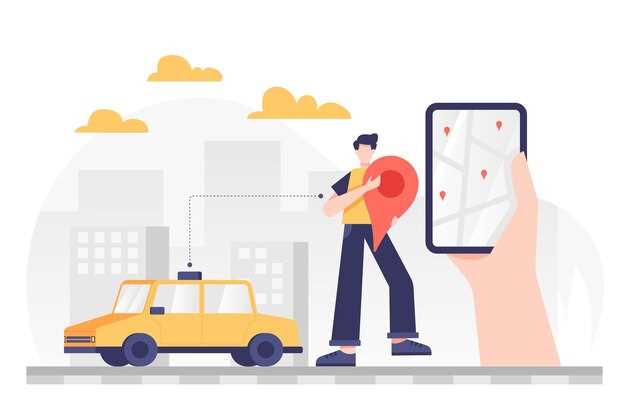
In the fast-paced environment of urban living, driving efficiently through city traffic has become an essential skill for modern drivers. With increasing vehicle density and limited road space, effective traffic management is crucial for ensuring safety and optimizing travel times. Understanding smart driving techniques not only enhances the overall driving experience but also contributes to a more sustainable urban environment.
One of the most significant factors in urban driving is fuel consumption. With the rising costs of fuel and growing concerns about environmental impact, adopting strategies to conserve fuel is a priority for many drivers. By implementing smart driving practices, such as maintaining steady speeds and minimizing idling, individuals can reduce their carbon footprint while also saving money at the pump.
Moreover, mastering the art of driving in congested city streets involves a combination of awareness, patience, and strategic planning. Recognizing traffic patterns, utilizing alternative routes, and practicing defensive driving can significantly ease the stress typically associated with urban commuting. These strategies play a vital role in improving traffic flow, reducing delays, and enhancing overall road safety.
Utilizing Traffic Apps for Route Optimization

In urban environments, navigating through congested streets can be a challenge for drivers, often leading to frustration and wasted fuel. By leveraging traffic apps, drivers can enhance their route optimization strategies, significantly improving their overall driving experience.
Traffic apps utilize real-time data to analyze current road conditions, providing users with the most efficient routes based on factors like traffic congestion, accidents, and roadwork. This technology allows drivers to avoid heavily congested areas, minimizing delays and reducing fuel consumption during their journeys.
Additionally, many apps offer features such as alternative route suggestions and estimated travel times, which can further aid in decision-making. By choosing less taken paths, drivers can not only save on fuel costs but also contribute to reducing urban traffic, making for a smoother commute for all road users.
Integrating traffic apps into daily driving routines fosters a more efficient and environmentally friendly approach. By optimizing routes, urban drivers can enhance productivity, lower stress levels, and support sustainable transportation goals. Embracing this technology is essential for modern urban driving and effective traffic management.
Implementing Eco-Driving Techniques in Urban Environments

Eco-driving techniques are critical for enhancing the efficiency of urban traffic management while simultaneously reducing fuel consumption. These practices encourage drivers to adjust their behavior and optimize vehicle performance, leading to less environmental impact.
One key technique is maintaining a steady speed. In urban settings, frequent stops and starts can lead to increased fuel consumption. Utilizing cruise control on open stretches and minimizing rapid acceleration can help in achieving smoother driving patterns. This not only conserves fuel but also reduces emissions.
Another essential aspect is anticipating traffic flow. Urban drivers should be taught to analyze traffic conditions ahead and make decisions based on potential changes, such as upcoming stoplights or slowing vehicles. By coasting to a stop rather than braking abruptly, drivers can enhance fuel efficiency while contributing to a reduction in stop-and-go traffic, which is often detrimental to urban driving.
Proper vehicle maintenance is also crucial for eco-driving. Ensuring that tires are properly inflated and regular engine checks are performed can significantly improve vehicle performance. A well-maintained vehicle operates more efficiently, which further reduces fuel consumption and emissions.
Additionally, utilizing technology can improve eco-driving practices. GPS navigation systems can provide real-time data on traffic conditions, allowing drivers to avoid congestion and select routes that promote fuel efficiency. Integrating such technologies into urban transportation planning can maximize the benefits of eco-driving techniques.
Incorporating eco-driving into driver education and public awareness campaigns is vital for promoting these practices among urban drivers. Local governments can collaborate with driving schools and automotive organizations to provide workshops or resources that emphasize the importance of eco-driving for environmental sustainability.
Ultimately, implementing eco-driving techniques in urban environments not only aids individual drivers in saving fuel but also contributes to the broader goal of effective traffic management and environmental stewardship. Encouraging these practices helps create more sustainable urban spaces for all residents.
Managing Stop-and-Go Traffic for Fuel Conservation
Urban environments often present significant challenges for drivers, particularly when it comes to stop-and-go traffic. This driving pattern not only leads to increased travel times but also contributes to higher fuel consumption. To enhance overall efficiency and promote fuel conservation, understanding how to navigate stop-and-go situations is essential.
One effective strategy is to maintain a steady pace. Instead of accelerating rapidly and then abruptly stopping, drivers should anticipate traffic flow and adjust their speed accordingly. This can reduce unnecessary engine strain and optimize fuel usage. Utilizing tools such as adaptive cruise control can further support this approach, as they help maintain consistent speeds, minimizing the need for frequent braking.
Another consideration is route planning. Utilizing navigation apps that provide real-time traffic updates allows drivers to avoid congested areas where stop-and-go conditions are likely to occur. By selecting alternative routes, drivers can save fuel and reduce the likelihood of being caught in heavy traffic.
Additionally, practicing smooth acceleration and braking can significantly impact fuel efficiency. Engaging in gradual starts and gentle stops not only conserves fuel but also reduces wear and tear on the vehicle’s components. This driving style fosters a more sustainable approach to urban travel.
Finally, drivers should remain aware of their surroundings and be prepared for sudden changes in traffic patterns. Staying mindful and alert can help mitigate the effects of congestion and promote better decision-making on the road. By implementing these techniques, urban drivers can effectively manage stop-and-go traffic while conserving fuel and enhancing overall efficiency.



